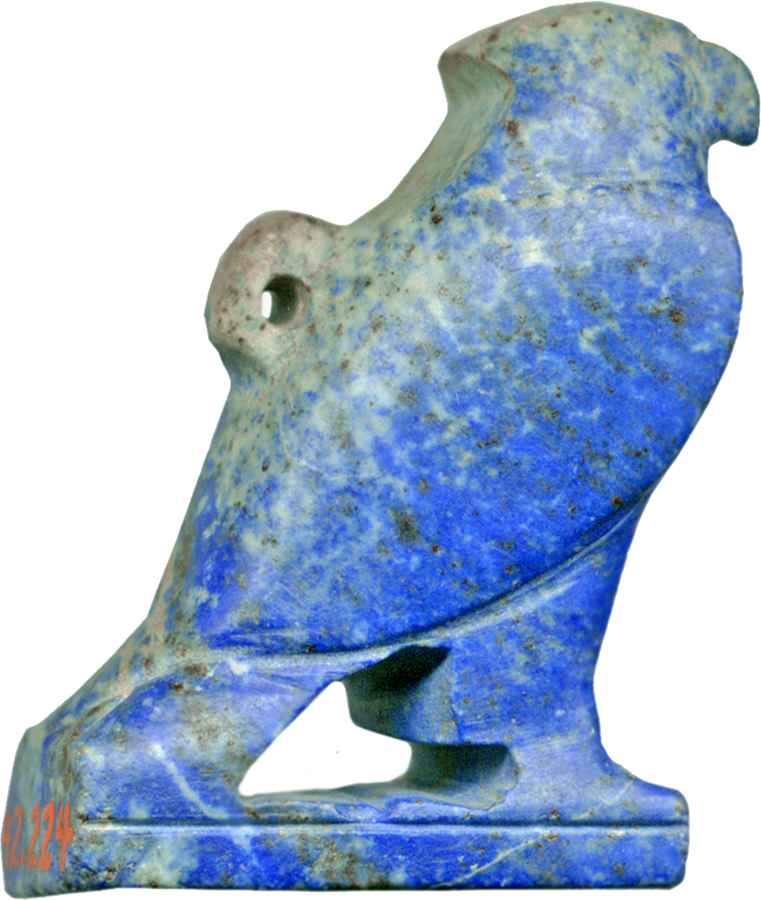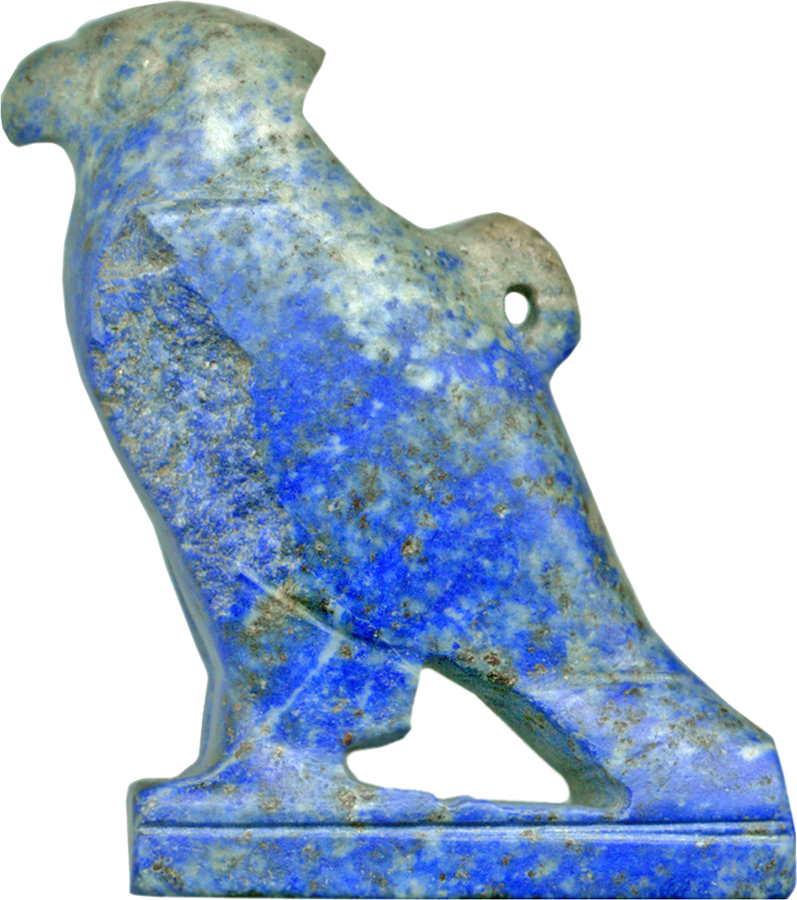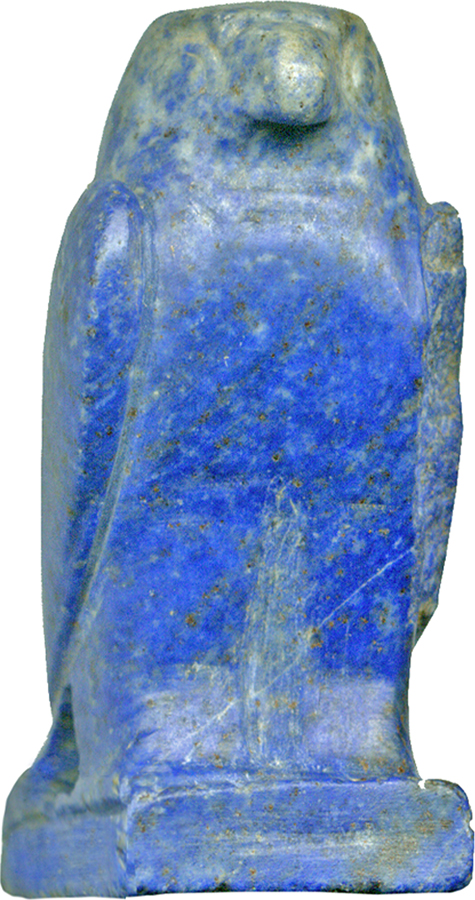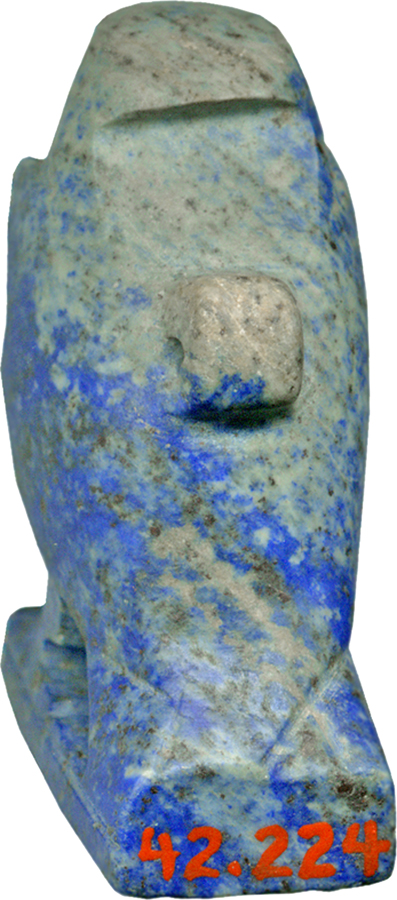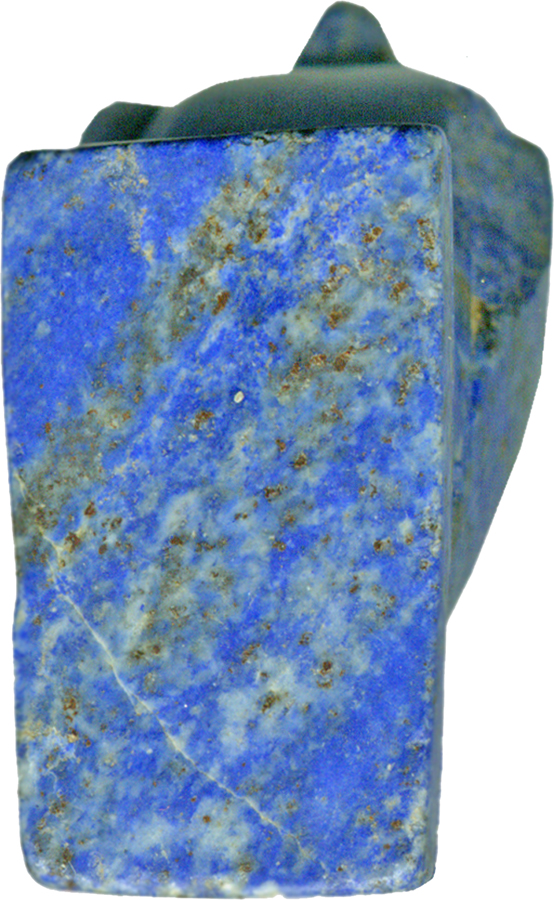Falcon
In this heavy breasted falcon carved of lapis lazuli, only the general forms, the round eyes and line across the beak are presented. There is a peculiar sharply cut depression behind the head which suggests a ruff.
Provenance
Provenance (from the French provenir, 'to come from/forth') is the chronology of the ownership, custody, or location of a historical object. Learn more about provenance at the Walters.
Henry Walters, Baltimore, 1913, by purchase; Walters Art Museum, 1931, by bequest.
Exhibitions
| 1984-1987 | Objects of Adornment: Five Thousand Years of Jewelry from the Walters Art Gallery, Baltimore. Cooper-Hewitt National Design Museum, New York; Chrysler Museum of Art, Norfolk; Carnegie Museum of Art, Pittsburgh; San Antonio Museum of Art, San Antonio; Philbrook Museum of Art, Tulsa; Honolulu Academy of Arts, Honolulu; New Orleans Museum of Art, New Orleans; Milwaukee Art Museum, Milwaukee; Minneapolis Institute of Art, Minneapolis; Toledo Museum of Art, Toledo; The John and Mable Ringling Museum of Art, Sarasota. |
| 1987 | Jewelry from the Walters Art Gallery and the Zucker Family Collection. The Walters Art Gallery, Baltimore. |
| 1979-1980 | Jewelry - Ancient to Modern. The Walters Art Gallery, Baltimore. |
Conservation
| Date | Description | Narrative |
|---|---|---|
| 10/8/1974 | Treatment | cleaned |
Geographies
Egypt (Place of Origin)
Measurements
H: 1 5/16 x W: 5/8 x D: 1 1/8 in. (3.33 x 1.56 x 2.88 cm)
Credit Line
Acquired by Henry Walters, 1913
Location in Museum
Not on view
Accession Number
In libraries, galleries, museums, and archives, an accession number is a unique identifier assigned to each object in the collection.
In libraries, galleries, museums, and archives, an accession number is a unique identifier assigned to each object in the collection.
42.224


